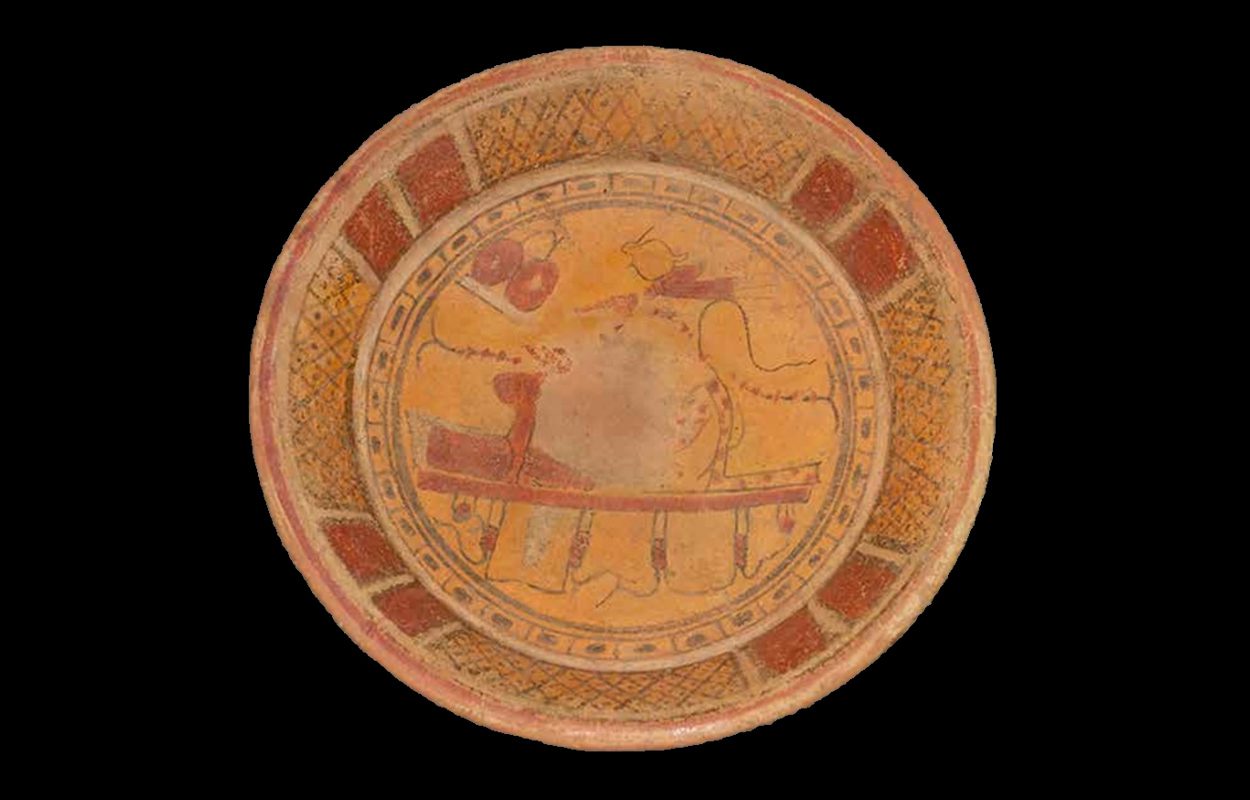Archaeologists from the National Institute of Anthropology and History (INAH) have uncovered a Maya dish depicting a wahyis protective spirit during excavations at Cansacbé in the Mexican state of Campeche.
The dish was deposited in a burial as a funerary offering and depicts a wahyis protective spirit that were auxiliary supernatural entities of Maya elite.
Those who possess a wahyis are named in Classic Maya inscriptions as a wahyaw, meaning “shaman, enchanter, or nagual”. The wahyis rested in the heart during the day, but at night while its owner slept, the wahyis soul could be projected at will into animals, comets, wind, lightning, and other supernatural phenomena.
The word “way” is the root of “dream” in the Mayan languages and derived from it are also various meanings associated to dreams, witchcraft, transformation and companion spirits. In a recent study by scholars Christophe Helmke and Jesper Nielsen, it is posited that these wahyi entities embody or symbolise afflictions from the netherworld, which can be manipulated and transferred onto others.
The most compelling proof linking the wahyis to personified illnesses can be found in the “El Ritual de los Bacabes,” a Yukatek colonial manuscript originating from the late 18th century, potentially a reproduction of an earlier codex.
This work contains 68 passages encompassing incantations, supplications, and medical formulas for remedying ailments. The maladies described within these texts adopt the likenesses of creatures or humans possessing their own consciousness, rendering them susceptible to the directives of the healer. The healer endeavors to expel these ailments from the afflicted individual’s body. The names assigned to these illnesses provide insight into the forms they are believed to assume, whether those of monkeys, deer, jaguars, birds, insects, or snakes.
The Cansacbé dish depicts a sitting representation of a jaguar, or a man dressed in the skin of a jaguar, surrounded by boxes that represent turtle shells. These types of imagery are common in ceramics that date from the Late Classic period (AD 600 to 900).
It was found during construction of Section 2 of the Mayan Train, where previous excavations during the 1990’s uncovered the remains of two palace-type buildings within the archaeological zone of Cansacbé.
Header Image Credit : INAH





